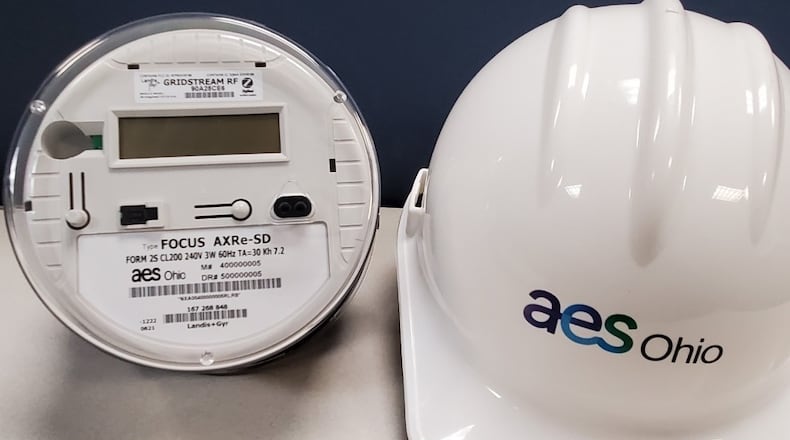“This is outrageous,” Tipton said. “I wonder how many AES customers know about this.”
An AES Ohio spokeswoman confirmed the fees.
“The opt-out fees have been approved by the PUCO (the Public Utilities Commission of Ohio),” AES Ohio spokeswoman Mary Ann Kabel said Thursday. “If customers choose not to have a smart meter installed, there is an initial one-time opt-out fee of $98.89 and a reoccurring monthly charge of $36.47.”
“The fees are intended to cover the costs associated with maintaining the procedures for reading and billing customers without smart meters,” Kabel also said. “By opting out of the smart meter a customer will not receive many of the smart grid benefits.”
AES Ohio hopes the new, digitally connected meters will mean more efficient usage and communication, quicker pinpointing of power outages and faster power restoration when outages happen, using digital technology to quickly re-route distribution around problems.
Last year, AES Ohio representatives said they intended to start installing 495,000 of the new meters in area homes before the end of 2021, a step in the unfolding of what utility leaders view as a $267 million transformation of the area’s electric grid, embracing digital technology that is expected to allow two-way communication between the utility and its customers.
In June 2021, state utility regulator PUCO approved the first phase of AES Ohio’s plan to build a “smart grid.”
The work is expected to be complete by the end of 2025.
A PUCO spokesman, Matt Schilling, said all PUCO-regulated electric utilities with advanced metering have this provision, a rule that was added in 2013, with a commission order establishing it.
AES Ohio implemented its own tariff this year, he said.
“The tariffed charges for each utility are cost-based charges that reflect the additional cost to serve customers with analog meters, such as dispatching staff to obtain meter readings,” Schilling said.
The smart meters do offer benefits, such as reduced costs for the utilities, he said. “The PUCO ensures that any operational savings experienced by the utility are flowed back to customers in the form of reduced rates.”
If a customer does not want to have an advanced meter, “they must pay the applicable fees,” Schilling said.
“Consumers should be allowed the choice to keep their existing electric meter instead of the utility installing a new ‘smart meter,’” the Office of the Ohio Consumers’ Counsel said in a statement. “And there should be no utility charge to the consumer for keeping an existing meter.”
Tipton has qualms about the plan. She pointed to the experience this year of customers of Xcel Energy, an electric services provider in Colorado.
Colorado and national media reports in September said some 22,000 people were “locked out” or prevented from adjusting their digital thermostats due to an “energy emergency” during a hotter period.
Xcel told a Denver TV station that customers who had signed up for a rewards program were locked out of their smart thermostats for hours.
Media reports described the rewards program as offering customers a $100 credit for enrolling and $25 off their bill annually.
“It’s a voluntary program. Let’s remember that this is something that customers choose to be a part of based on the incentives,” Emmett Romine, vice president of customer solutions and innovation at Xcel, told the TV station.
Ohio utilities do not control how or when smart-meter customers consume electricity, Schilling said. He was unaware of any Ohio providers having similar “reward” programs.
***
AES Ohio “smart grid” project
State regulators approved the AES Ohio Smart Grid plan in June 2021. The utility is in the second year of the 4-year plan.
Today, AES Ohio has installed more than 108,000 smart meters in its service territory with completion expected at the end of 2025.
When will you receive a smart meter? AES Ohio says you should receive a call notifying you of plans for meter installation. Installations began in December 2021 and will continue through June 2025.
A smart meter installation map along with additional information can be found on the AES Ohio website.
About the Author

